#edgar j. kaufmann
Text

Kaufmann House - Coachella Valley Photo! - by paulfuentes_photo. - source Coachella Valley.
864 notes
·
View notes
Photo

Bench. ca. 1865. Credit line: Purchase, The Edgar J. Kaufmann Foundation Gift, 1969 https://www.metmuseum.org/art/collection/search/461
#aesthetic#art#abstract art#art museum#art history#The Metropolitan Museum of Art#museum#museum photography#museum aesthetic#dark academia
8 notes
·
View notes
Photo

Frank Lloyd Wright - Edgar J. Kaufmann Residence “Fallingwater”, Bear Run, Ohiopyle, Pennsylvania, 1935-37
2 notes
·
View notes
Text
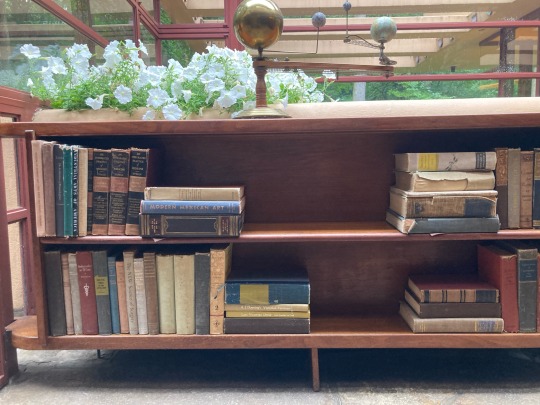
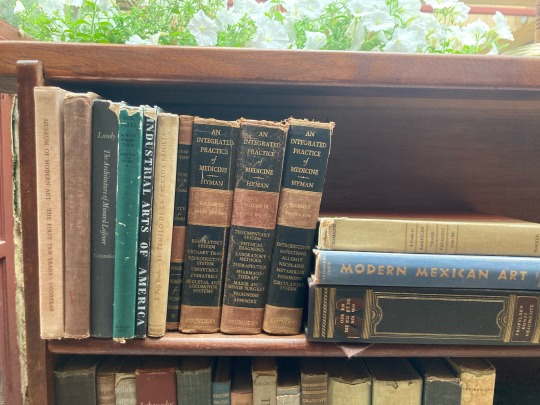
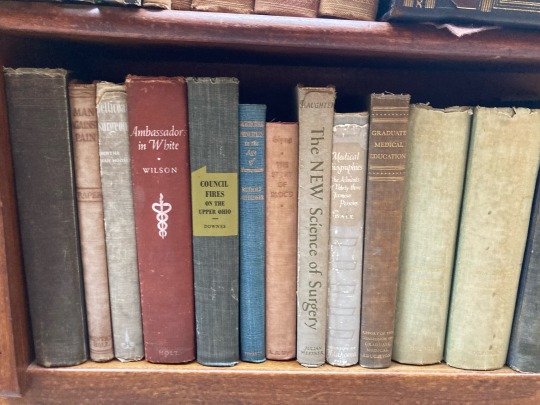
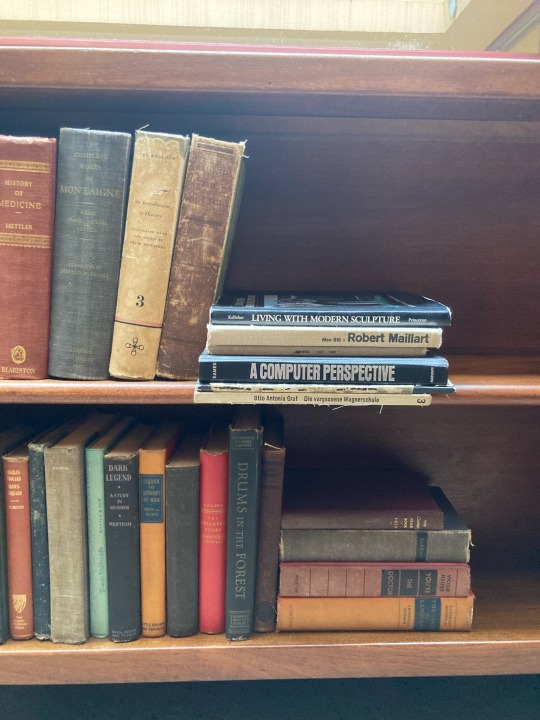

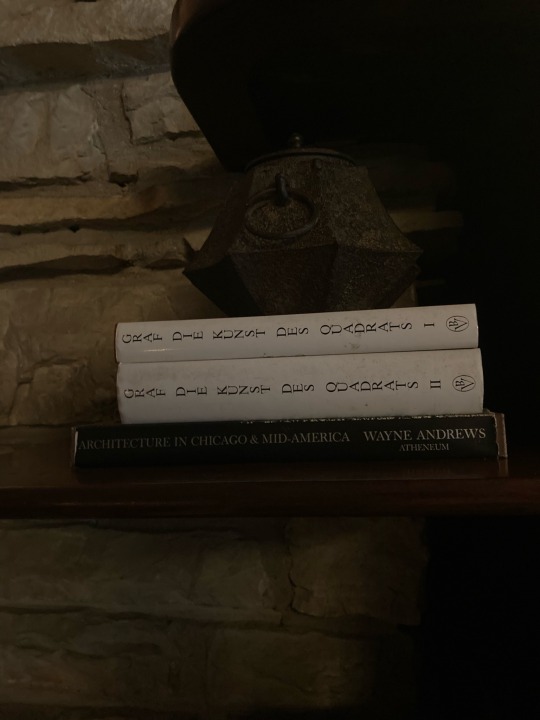
Books in the ‘fallingwater’ house for Edgar J. Kaufmann designed by frank lloyd wright
0 notes
Text

BE LIKE WATER
Water is shapeless, fill a cup with water and it becomes the cup. BE LIKE WATER.
Water is strong, it can create storms that the strongest buildings can’t withstand. BE LIKE WATER.
Water is pure, crystal clear and nourishing to the soul. BE LIKE WATER.
Water is soothing, sounds of a waterfall wash away all negativities. BE LIKE WATER.
Be shapeless, be strong, be pure, be soothing, BE LIKE WATER!
I chose image 6-11 Frank Lloyd Wright, Edgar J. Kaufmann House, known as Fallingwater, from page 135. This picture spoke to me in many ways. The setting and the sounds of the birds I heard while looking at the picture. The mood and smell of standing in nature in the moment was captured in this picture. What caught my eye the most was the water in the waterfall. It gave me a bold feeling of shapelessness, strength, purity, and a soothing feeling that only water can give. I feel that the picture did a great job of describing nature. Water is an essential piece of nature. My translation of the image preserves the original because it gives more emphasis on the waterfall itself. My work captures the mood and feeling of the water. It gives different characteristics of water and suggests we should all be more like water. Instead of discussing the work of architecture, meaning the building in the picture, I chose a vital piece of nature mentioned in the title to emphasize the picture's meaning.
0 notes
Text
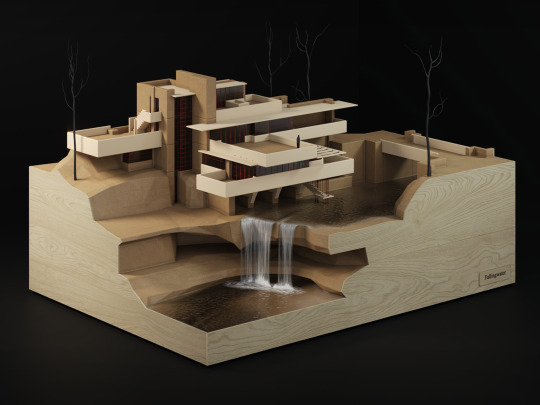
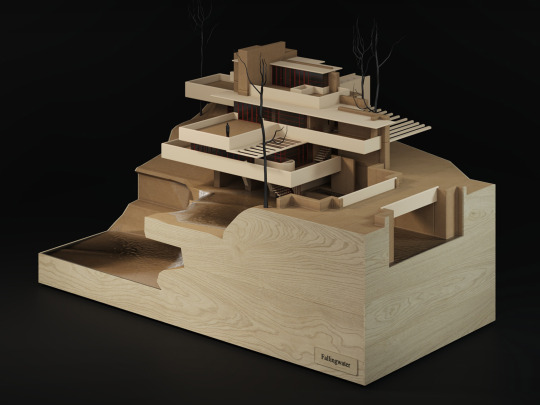


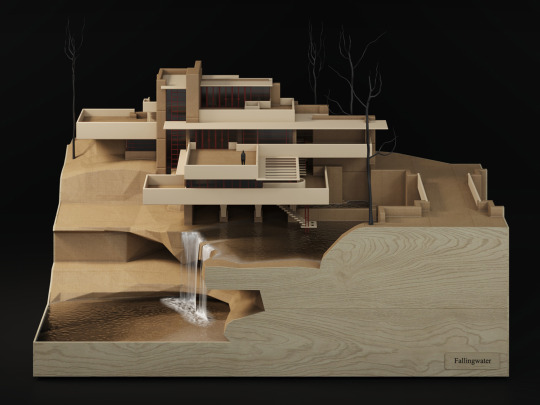

Fallingwater by Anton Kutznetsov
Fallingwater is a house designed by architect Frank Lloyd Wright in 1935 in southwest Pennsylvania's Laurel Highlands, about 90 minutes from downtown Pittsburgh. The house was built partly over a waterfall on Bear Run in the Mill Run section of Stewart Township, Fayette County, Pennsylvania, located in the Laurel Highlands of the Allegheny Mountains. The house was designed as a weekend home for the family of Liliane and Edgar J. Kaufmann, owner of Kaufmann's Department Store.
#photography#architecture#Frank Lloyd Wright#house#Fallingwater#waterfall#maquette#scale model#design#vintage
302 notes
·
View notes
Text
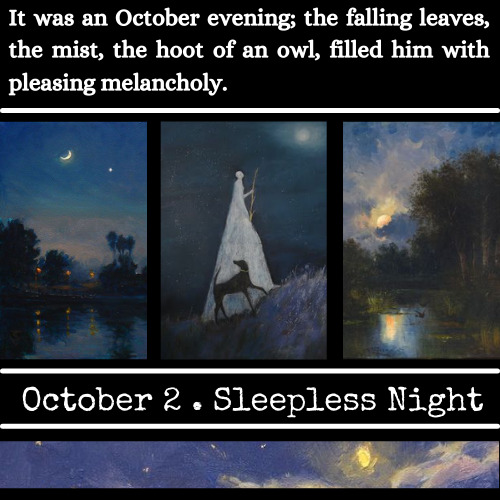




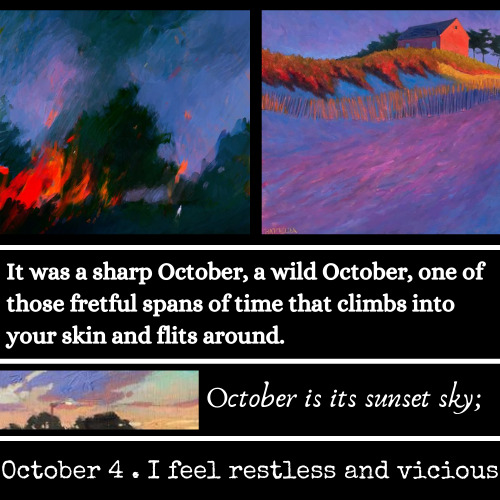
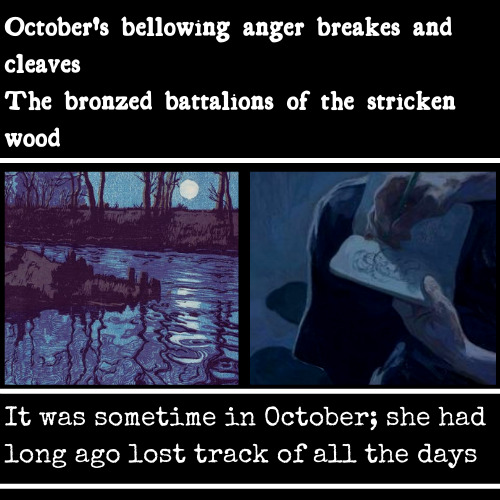
1. Maurice, E. M. Forster I 2. Franz Kafka, from "Diaries, 1910-1923" I 3. Virginia Woolf, A Room of One’s Own I 4. T. S. Eliot, The Love Song of J. Alfred Prufrock I 5. Tamura Ryuichi, “October Poem,” I 6. Joy Fielding I 7. Charlotte Brontë, Villette I 8. Elliot merrick I 9. Henry David Thoreau I 10. Diaries of Franz kafka I 10. Edgar allen poe I 11. W.B. Yeats I 12. Siegfried Sassoon I 13. Slyvia Plath I
1. Thomas Van Steine I 2. Jeanie Tomanek I 3. Robert Weber I 4. Marc R. Hanson I 5. Thomas Van Stein I 6 I 7. Henrik Aa. Uldalen I 8. Leonardo Santamaria I 9 I 10. Michael Orwick I 11. Ruprecht Von Kaufmann I 12. Marcel rieder I 13. Holly Warburton I 14. Peter Batchelder I 15. Christopher Long I 16. Thomas Van Stein I 17. Hugo Henneberg I 18. Ruprecht Von Kaufmann
#dark academia#dark academia aesthetic#web weaving#parallels#october#light academia aesthetic#art#quotes aesthetic#words#typography#parallel#comparatives#aesthetic#blue#purple#moodboard#academia#chaotic academia#light academia#chaotic academic aesthetic#artists#night#autumn#writing#books#study#beauty#design#collage#moon
364 notes
·
View notes
Text
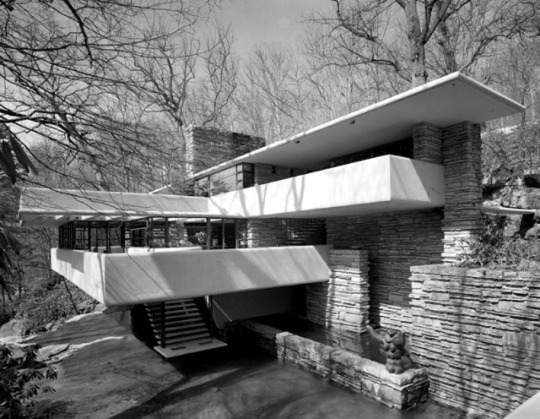
Fallingwater - A Different View
Fallingwater is a house designed by the architect Frank Lloyd Wright in 1939 in the Laurel Highlands of southwest Pennsylvania, about 70 miles (110 km) southeast of Pittsburgh. The house was built partly over a waterfall on Bear Run in the Mill Run section of Stewart Township, Fayette County, Pennsylvania, located in the Laurel Highlands of the Allegheny Mountains. The house was designed as a weekend home for Liliane and Edgar J. Kaufmann, the owner of Pittsburgh's Kaufmann's Department Store.
After its completion, Time called Fallingwater Wright's "most beautiful job" and it is listed among Smithsonian's "Life List of 28 Places to See Before You Die". The house was designated a National Historic Landmark in 1966. In 1991, members of the American Institute of Architectsnamed Fallingwater the "best all-time work of American architecture" and in 2007, it was ranked 29th on the list of America's Favorite Architecture according to the AIA.
The house and seven other Wright constructions were inscribed as a World Heritage Site under the title "The 20th-Century Architecture of Frank Lloyd Wright" in July 2019.
13 notes
·
View notes
Text

Julius Shulman, Edgar J. Kaufmann House, Palm Springs, California, 1947
Palm Springs Museum
15 notes
·
View notes
Photo

The Kaufmann Desert House – a.k.a. the Kaufmann House – was designed by Richard Neutra in 1946 for businessman Edgar J. Kaufmann
https://www.wallpaper.com/architecture/four-contemporary-homes-that-put-nature-on-centre-stage
256 notes
·
View notes
Text

Kaufmann House - Coachella Valley Photo! - by paulfuentes_photo. - source Coachella Valley.
80 notes
·
View notes
Photo
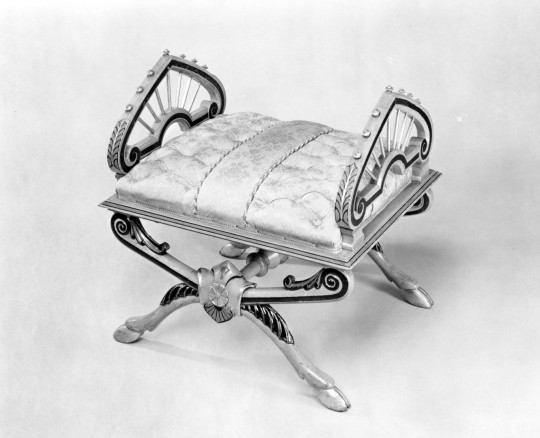
Bench. ca. 1865. Credit line: Purchase, The Edgar J. Kaufmann Foundation Gift, 1969 https://www.metmuseum.org/art/collection/search/461
#aesthetic#art#abstract art#art museum#art history#The Metropolitan Museum of Art#museum#museum photography#museum aesthetic#dark academia
2 notes
·
View notes
Photo
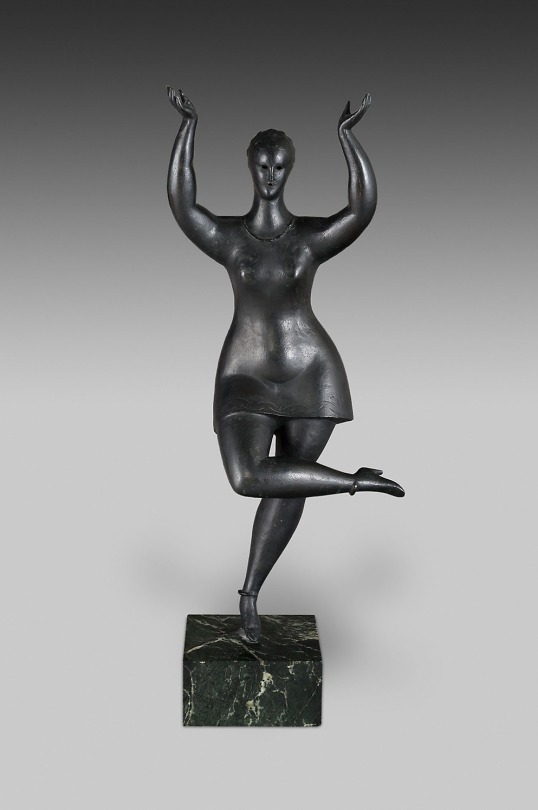
Female Dancer, Elie Nadelman, 1920, Art Institute of Chicago: American Art
“Is Nadelman serious?” asked a writer for the New York World in 1919. “Are these things art, or only insolence?” This indignation stemmed from the fact that Elie Nadelman’s sculptures depicted people in contemporary dress, rather than the classical drapery used by most sculptors at the time. Nadelman garbed the figure of Female Dancer in a short dress and high heels, evoking the entertainments of the modern city. Female Dancer twirled into the Roaring Twenties with whimsy and charm, among the attributes that made Nadelman one of the most celebrated American modernist sculptors of the early 20th century. Through prior gift of the Mary and Earle Ludgin Collection; restricted gift of the Antiquarian Society; through prior gifts of Albert A. Robin, the Estate of Felicia Mayer Marsh, the Friends of American Art Collection; through prior purchase of Dr. A.J. Ochsner, Mrs. Margaret Cook, J.N. Eisendrath, Dr. W.H. Allport, Mrs. T.A. Shaw, Miss Bertha Randolph, Mrs. Pauline Dohn Rudolph, and the B.F. Ferguson Fund; The Kate S. Buckingham Fund; through prior purchase of the Mr. and Mrs. Frank G. Logan Purchase Prize Fund; restricted gift of Mr. and Mrs. Samuel M. Mencoff; through prior gifts of the George F. Harding Collection, Edgar Kaufmann Jr., and Mary and Leigh B. Block; through prior bequest of Dr. John J. Ireland; restricted gift of Jamee J. and Marshall Field; through prior purchase from the Roger McCormick Fund; through prior gifts of Yvonne and Richard Angarola, Miss Gertrude Finch, Mrs. Ignatius Jelinski, the Charles H. & Mary F. S. Worcester Collection, the Walter H. Schulze Memorial Collection, and Donn Shapiro; Jane and Morris Weeden Fund; through prior gifts of the Society for Contemporary American Art and Mr. Sam A. Lewisohn; through prior purchase of the Charles S. Peterson Purchase Prize Fund; through prior gift of the Mr. and Mrs. Samuel Nickerson Collection; Vance American Arts Fund; through prior gifts of the estates of Edgar William and Bernice Chrysler Garbisch and Marie F. Lennards; through prior purchase of the Samuel P. Avery Fund; through prior gifts of Joseph R. Shapiro, Mr. and Mrs. Charles S. Dewey Jr., Mr. and Mrs. Martin A. Ryerson Collection, Evelyn Padorr and Helene Segil in memory of Sarah and George Ehrlich, Honoré Palmer, Alexander Bing, Chicago Normal School Alumni, Elizabeth Sprague Coolidge, Leonard Florsheim, Mrs. Abram Poole, and Mrs. Maurice L. Rothschild; through prior purchase of the A.A. McKay Fund
Size: 82.6 × 43.2 × 19.1 cm (32 1/2 × 17 × 7 1/2 in.) (without base)
Medium: Bronze
https://www.artic.edu/artworks/233228/
11 notes
·
View notes
Photo

Excavation, Willem de Kooning, 1950, Art Institute of Chicago: Contemporary Art
Willem de Kooning was a central figure in Abstract Expressionism, an art movement that espoused the painterly actions of the artist as a sign of his or her emotions. De Kooning completed Excavation in June 1950, just in time for it to be exhibited in the twenty-fifth Venice Biennale. His largest painting up to that date, the work exemplifies the Dutch-born innovator’s style, with its expressive brushwork and distinctive organization of space into sliding planes with open contours. According to the artist, the point of departure for the painting was an image of women working in a rice field in Bitter Rice, a 1949 Neorealist film by Italian director Giuseppe de Santis. The mobile structure of hooked calligraphic lines defines anatomical parts—bird and fish shapes, human noses, eyes, teeth, necks, and jaws—that seem to dance across the painted surface, revealing the particular tension between abstraction and figuration that is inherent in de Kooning’s work. The original white pigment has yellowed over the years, diluting somewhat the flashes of red, blue, yellow, and pink that punctuate the composition. Aptly titled, the painting reflects de Kooning’s technically masterful painting process: an intensive building up of the surface and scraping down of its paint layers, often for months, until the desired effect was achieved. Mr. and Mrs. Frank G. Logan Purchase Prize Fund; restricted gifts of Edgar J. Kaufmann, Jr., and Mr. and Mrs. Noah Goldowsky
Size: 205.7 × 254.6 cm (81 × 100 1/4 in.), without frame
Medium: Oil on canvas
https://www.artic.edu/artworks/76244/
12 notes
·
View notes
Photo



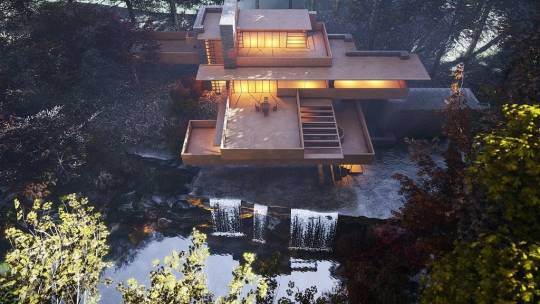





Man’s Impact on the Environment
22 November 2021
Fallingwater - Frank Lloyd Wright
A World Heritage Site
U.S. National Register of Historic Places
Fallingwater is a house designed by the architect Frank Lloyd Wright in 1939 in the Laurel Highlands of southwest Pennsylvania, about 70 miles (110 km) southeast of Pittsburgh.The house was built partly over a waterfall on Bear Run in the Mill Run section of Stewart Township, Fayette County, Pennsylvania, located in the Laurel Highlands of the Allegheny Mountains.
The house was designed as a weekend home for Liliane and Edgar J. Kaufmann, the owner of Kaufmann's Department Store. The incredible house stayed in the family until after the father, Edgar Sr., and his wife Lilliane had both passed away. In 1963, son Edgar Jr. entrusted the house to the Western Pennsylvania Conservancy, and in 1965 it became a museum.
The home demonstrates Wright’s love of nature and expresses his desire to create harmony between man made structures and the natural environment.The home is integrated into the natural landscape in multiple ways. It uses local materials such as stone quarried on the site, flagstone floors, and extensive wood to echo natural forms and textures in the surrounding environment.
The house was designated a National Historic Landmark in 1966. In 1991, members of the American Institute of Architects named Fallingwater the "best all-time work of American architecture" and in 2007, it was ranked 29th on the list of America's Favorite Architecture according to the AIA.
The house and seven other Wright constructions were inscribed as a World Heritage Site under the title "The 20th-Century Architecture of Frank Lloyd Wright" in July 2019.
10 notes
·
View notes
Photo

Fallingwater (Edgar J. Kaufmann House).
Frank Lloyd Wright,1937.
(photo: Daderot, CC0 1.0)
87 notes
·
View notes